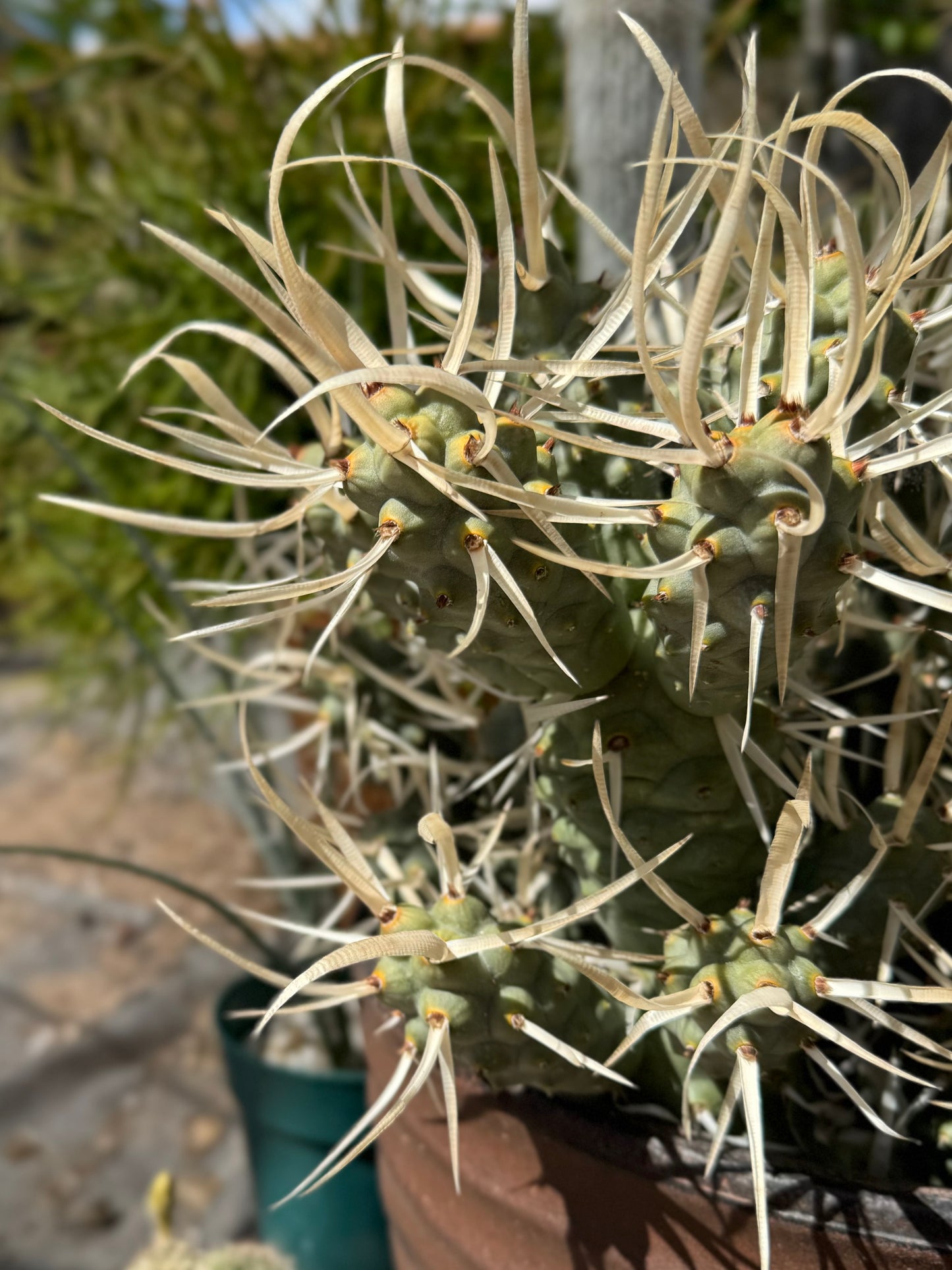⚠️ Plants cannot ship to CA, FL, HI, or US territories
Tephrocactus articulatus var. papyracanthus "Paper Spine Cactus"
Tephrocactus articulatus var. papyracanthus "Paper Spine Cactus"
Couldn't load pickup availability
Family Cactaceae
Subfamily Opuntioideae
Tribe Tephrocacteae
Genus Tephrocactus
Species articulatus
Variant var. papyracanthus
Type tubercled
Common name(s) Paper spine cactus
The paper spine cactus earns its name from its flat, paper-like spines that can reach several inches in length. Hearing "paper spine cactus" you might think "great, sounds fantastic for a person who hates spines like me." Well fair warning: these jerks are poky! The 'paper spines' have very sharp points and are good at catching in clothing if you get too close. This is part of how they spread in the wild, since segments easily pop off similar to a cholla. Also be wary of the glochids growing around the base of the paper spines, and between the segments of the cactus.
Native to Argentina, Tephrocactus articulatus is hardy to hot and cold. It enjoys full sun for a lot of the year but may need more shade if it starts to sunburn—the surface will blanche. "Tubercled" simply means the areoles are raised so the segment is bumpy. When the plant is well-watered segments will be fat, and the tubercles become more prominent as it dries.
This cactus can apparently get decently tall but tends to max out around 1–2 feet in height because the segments fall off in storms or when jostled. Put it somewhere safe and leave it alone; it loves to drop segments when you try to move it. Segments will easily root so put some back in the pot for a denser planting, or start new plants.
Options: The "parent" plant you will receive a segment from is pictured. Options are a single segment, unrooted. Rooted cuttings not yet available, but these literally evolved to fall off and root easily!
| Growth habit |
Upright branching segments |
| Size |
Segments 2–3.5 inches |
| Light | Full sun unless sun-burning |
| Water | Occasional water in summer growing season, allow to dry between waterings; water less in the winter |
| Overwintering | Hardy to 32°F, can tolerate temperatures down to the teens for short periods |
| Flowers | Spring, but uncommon in cultivation |
| Native to |
Argentina |
| Conservation risk status |
Least Concern (LC) |








